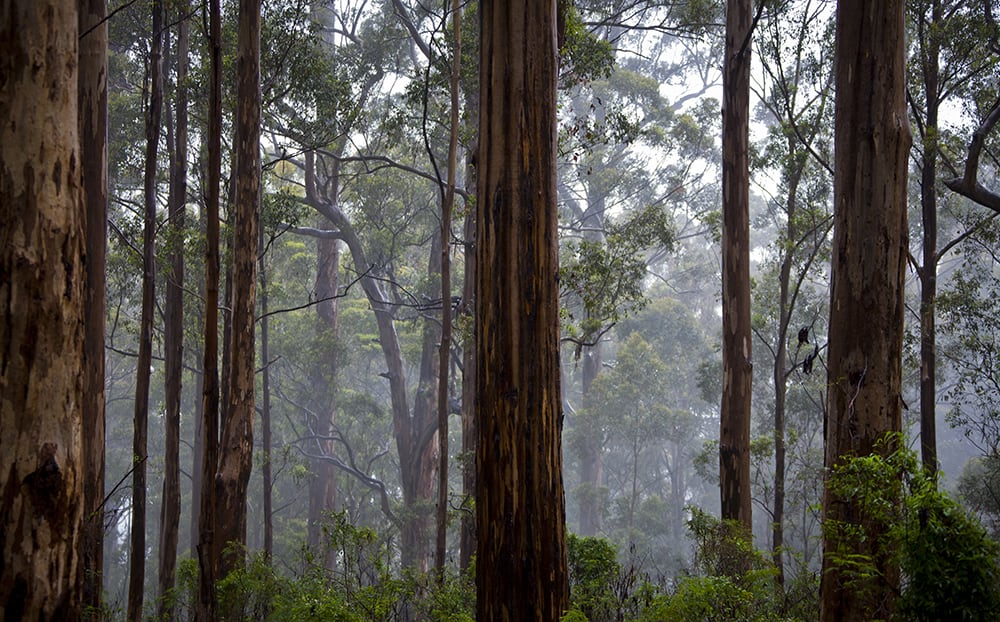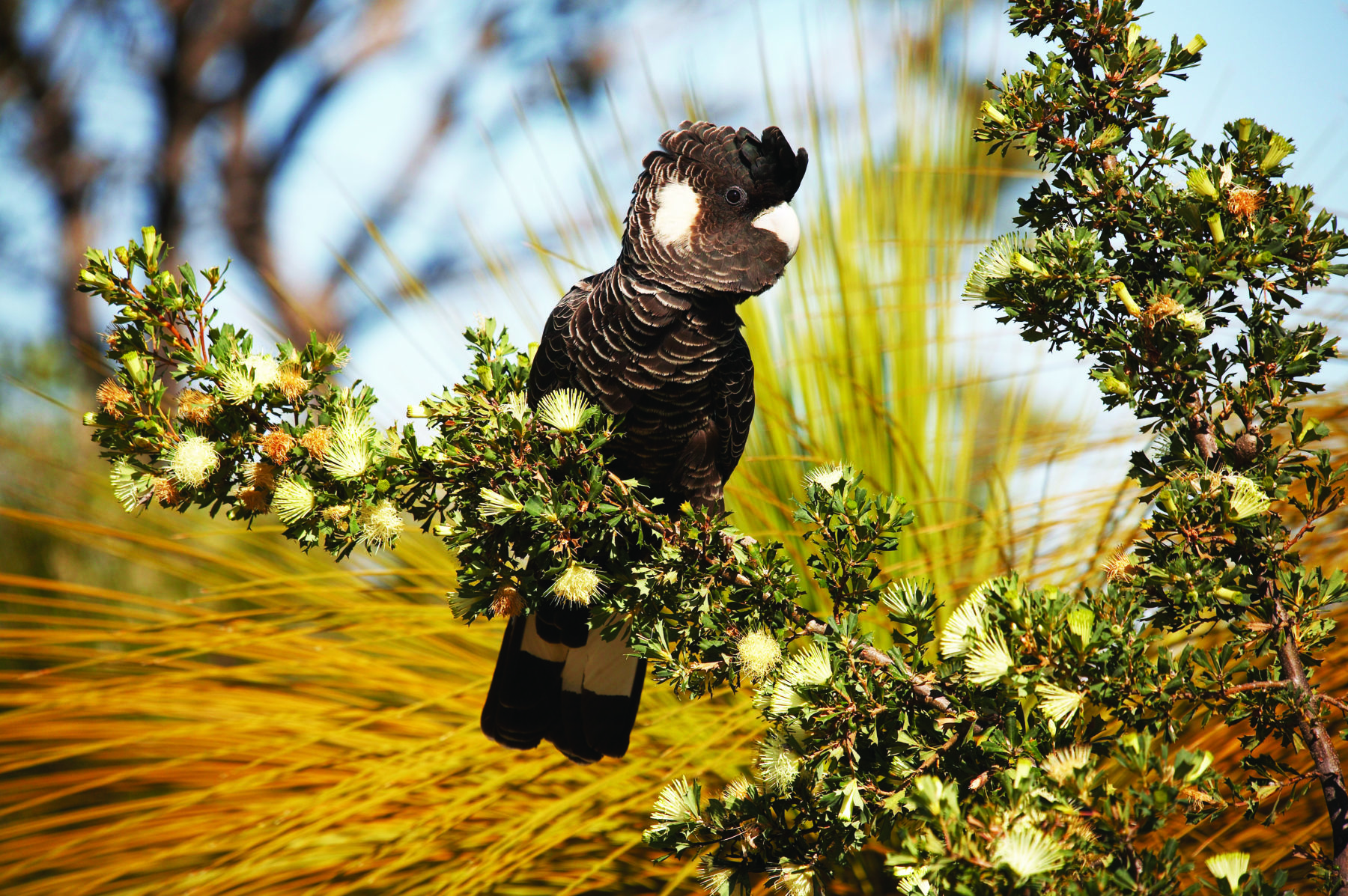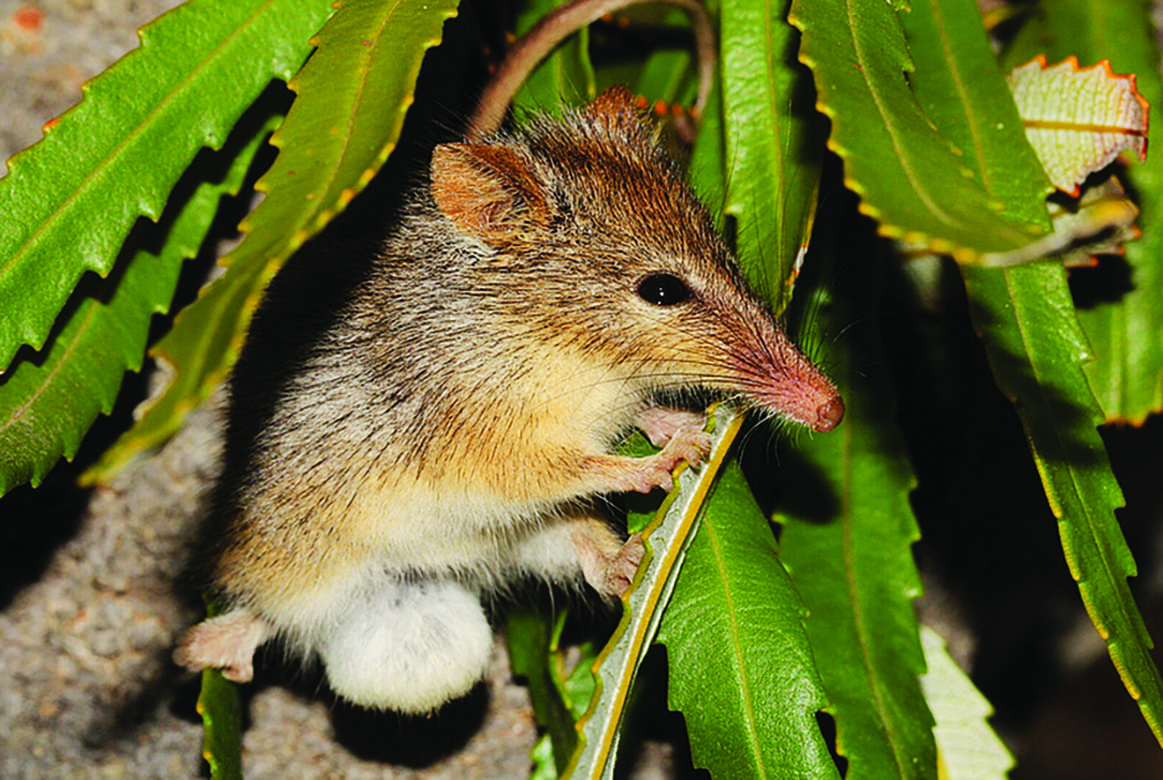IT CONJURES AN ancient time when Earth’s supercontinents were being rearranged; when Gondwana– the great southern landmass that eventually broke into Australia, Africa, South America, Antarctica, Arabia and the Indian subcontinent – was covered in lush rainforests; and when the evolutionary paths of the plants and wildlife of the Northern and Southern hemispheres diverged.
It is fitting, then, that the word features in the name of one of Australia’s biggest conservation projects: Gondwana Link.
Epic in both proportion and intent, it aims to restore and reconnect 1000km of bushland in southern Western Australia, from the karri forests of the state’s south-west to the semi-arid woodlands and mallee country bordering the Nullarbor Plain further east.
These habitats straddle one of the oldest intact parts of the Earth’s crust: the Yilgarn Craton. The landforms here have been undisturbed by geological interference for more than 250 million years – unlike the landscapes of Europe and many other parts of the world where landforms and habitats were renewed during the last Ice Age, a mere 20,000 years ago.

With hundreds of millions of years of uninterrupted and continuous evolution of plant species, south-western WA is one of the most floristically diverse places on Earth. It is also a biodiversity hotspot, home to high levels of endemic plants, but it’s under pressure due to vegetation loss.
Sterling Range and Fitzgerald River national parks and the Great Western Woodlands – the largest area of intact temperate woodlands left in the world – are just a few beauty spots within the Gondwana Link corridor. In these stunning terrains, a magic seems to linger from long-ago stirrings of creation.
Fortunately, there are conservation organisations, community groups and individuals who understand the complexities that underlie these ancient landscapes and are committed to restoring and protecting them through Gondwana Link.
The initiative was launched in 2000 by a small group of local conservationists. The current program, which coordinates a large number of separate conservation projects along the 1000km-long corridor, was established in 2002. In 2009 Gondwana Link Ltd (GLL) was founded to formalise these existing collaborations.
“We were fortunate to begin the program with a significant donation through The Nature Conservancy,” explains Keith Bradby, CEO of GLL. The program quickly gained momentum as support grew for the mission to protect existing areas of natural vegetation and restore gaps in bushland throughout the link.
“Small isolated reserves eventually lose a number of their species over time,” Keith says. “We see big, connected functional landscapes as the most effective remedy for the linked biodiversity and climate crises, and the work of achieving the big changes needed includes lots of little changes.”
The link encompasses some stunning national parks and reserves that, along with vast, largely intact natural areas such as the Great Western Woodlands, serve as its foundation. The buying of private farmland and remnant habitats provides the means of connecting these ecosystems. While there is some government funding available, GLL doesn’t rely on it.
“One of the big changes that we’ve led is the purchasing of land by way of the private conservation movement,” Keith says. “Environmental philanthropy was almost unheard of in Australia [when the project began] but has since grown enormously. Bush Heritage and Greening Australia, as well as a number of individual conservation buyers, have come on board with the purchasing of properties that serve to connect these fragmented habitats.”
The link is loosely divided into three zones.
The forest zone encompasses the western, wetter end of the link. The central zone features more fragmented patches of natural habitat, stretching from the Walpole Wilderness area to Ravensthorpe. The third zone, which makes up the link’s eastern end, covers the Great Western Woodlands.
“One of the big changes we were able to effect in the early years was the business of turning whole paddocks back into bush,” Keith says. “Achieving full ecological restoration is complex work and a science in itself.” Greening Australia has led much of the ecological restoration and currently restores 600–700ha a year.
Keith attributes the link’s success to its collaborative model. In the forest zone, GLL has worked with Nature Conservation Margaret River Region for many years and more recently with the WA Forest Alliance.
Towards Norseman, in the link’s eastern reaches, GLL has partnered with the Ngadju community, who manage and have exclusive native title rights over a large tract of the Great Western Woodlands. It is working with Ngadju rangers to incorporate traditional land management practices, particularly in terms of fire management, into the restoration and conservation works.
“We began Gondwana Link with an ecological perspective but soon realised it needed to include people,” Keith says. “We’ve now got a formal strategy in place to mentor where needed.”
Mentorships are available for local farmers, Aboriginal groups and private landholders. “Whatever we’re doing, it seems to be working,” Keith says, reflecting on how far the program has come since it began. “We’re changing the narrative from degradation to energetic restoration.”
Linking up
Energetic restoration is very much in evidence on the ‘his-and-hers’ blocks of Eddy and Donna Wajon.
In 2002 theirs were the first private properties to be included in the link. The couple, now in their mid-60s, met in Donna’s native Boston, USA, while Eddy, originally from Perth, was doing his PhD in environmental chemistry. After the couple married, they settled in Perth and it didn’t take long for Donna to become smitten with the WA flora.
As the years passed, Eddy, who has long lobbied against the relentless clearing of native bush in south-western WA, felt increasingly frustrated with the region’s environmental situation.
In 2000 he and Donna began looking at buying a bush block. “We originally looked at some urban properties but realised we could do more with a larger acreage,” Eddy says. “It was at that point that Bush Heritage suggested looking at land in the Gondwana Link between the Stirling Ranges and Fitzgerald River – we just happened to be first on the scene.”
The couple looked at some 20 properties before whittling down their options to just two. Donna was keen on 46ha in Tenterden, about 340km south-east of Perth, that was awash with native orchids.
Eddy was more drawn to a 572ha property at Boxwood Hill, about 150km east of Tenterden. They couldn’t decide so bought both. “Owning these conservation properties is the positive aspect of my lobbying to prevent the clearing of bushland for development,” Eddy says.
“We can feel good about this positive contribution, because it’s under our control; we make the decisions.”
The property in Tenterden, which they named Mondurup View, is mainly woodland dominated by wandoo eucalypts with a shed tucked among the trees. Unfortunately, a bushfire swept through in 2003.
“Many 400-year-old wandoo trees were destroyed,” Eddy says. “All the nesting hollows disappeared; it was devastating.” They have since installed 13 bird nest boxes, including five tubes made of high-density polyethylene especially for cockatoos. “Two of these are almost constantly in use, which has resulted in eggs laid and fledglings hatched.”
Following the fire, the couple accessed a government grant to pay for weeding, installing the nest boxes and building a bridge across the Young River. “Since the fire, we have documented the first time to flowering of about 250 species and this bit of citizen science will help inform future fire management, not just on our property, but more broadly,” Eddy says.
Their second property, at Boxwood Hill, is now known as Chingarrup Sanctuary. It had originally been entirely cleared except for areas around rocky outcrops. Much of it had never been cropped and had reverted to native bush and grasses but about 20 per cent remained cleared when Eddy and Donna bought it. Soon they had help from Greening Australia and Bush Heritage Australia to revegetate, weed and eradicate feral animals.
Chingarrup’s vegetation is dominated by mallee woodland. It’s the native habitat of the malleefowl, a threatened ground-dwelling bird that lays its eggs in huge mounds of vegetation.
“For the first 10 years there were no sightings of malleefowl at all, but since fox baiting we’re now seeing them on every visit,” Eddy says. “There are three active malleefowl mounds, which have triggered 50,000-plus motion sensitive photos, including several unusual instances that debunk commonly held notions about malleefowl.
“In the first stages of mound building, they display like a peacock and both the male and female work the mound, not just the male as typically believed.”
Eddy and Donna still live in Perth but visit both properties when they can. Now that Eddy is retired and Donna almost so, they visit more often, usually organising their dates around the availability of visitors and volunteers. They are thrilled with the progress made at Chingarrup.
“We have re-vegetated 80ha of the 100 that was still cleared at the time of purchase,” Eddy says. “With the carbon sequestration this offsets our travel carbon footprint when getting to the properties.”
The couple loves sharing their vision with like-minded people. “Many visitors come to both properties to enjoy and participate,” Eddy says. “We have groups that vary from six to 40 people at any one time.”
The couple’s email list includes many wildlife and conservation groups, such as the Wildflower Society and BirdLife WA. They are often joined by independent experts, with knowledge in diverse fields.
“The types of activities depend on who’s available during each visit,” Eddy says. This includes such things as flora quadrat surveys, fauna pit-trapping, moth light-trapping, weeding, motion-sensitive-camera logging and feral animal baiting, trapping and shooting.
“Recently we had a visit from about 10 families of four-wheel-drivers,” Eddy says. “They came specifically to fix some of our tracks that had deteriorated – all while having a family-friendly nature experience. They loved it!” This was organised via the Conservation Council of WA’s Tending the Tracks Alliance.
Aside from receiving one government grant, their considerable achievements are thanks to self-funding and the help of many volunteers. In addition, their close friends Chris and Lesleigh Curnow help out regularly by weeding and trimming tracks on both properties. Eddy and Donna are also beginning to get some tourism dollars as interest in environmental travel grows.

The Fitz-Stirling link
Conservation organisation Bush Heritage Australia is a major stakeholder in Gondwana Link. “We focus predominantly on the 70km tract of country between the Stirling Range and Fitzgerald River national parks,” says Simon Smale, Bush Heritage’s Gondwana Link Landscape Manager.
“This is known as the Fitz-Stirling link and was intact country until as recently as World War II, when a farming initiative was introduced to clear the land with the catchcry of ‘a million acres a year’.”
This was a questionable scheme in an era of little environmental understanding within government. Farmers were obligated to clear a percentage of their land each year to comply with purchase conditions, whether they were ready and able to crop or not.
“Since 2003 we have built a pretty comprehensive property portfolio and we now own six properties,” Simon explains. “The first purchase was an 877ha property in Fitz-Stirling called Chereninup, on which the first 60ha of restoration was undertaken.”
Post-war clearing of the marginal sandy country had decimated great areas of proteaceous plants – the banksias and hakeas that made up traditional foraging areas for Carnaby’s black-cockatoos, which are now endangered.

“One of our donors was keen to work with us to address the plight of the Carnaby’s and we came up with a project to regenerate their proteaceous habitat. A direct seeding trial on one of the properties began in 2015 and we continued with it in 2016,” Simon says.
“Last week, there were hundreds of Carnaby’s giving the four-year-old growth a hammering. It’s been a great success. We are doing ecological monitoring of the habitat in the restoration sites and have found higher abundance of bird species than has been recorded in the natural bushland; the restoration is so productive.”
Another Bush Heritage success story is a honey possum, or noolbenger, project being overseen by ecologist Angela Sanders, a founding member of the original Gondwana Link vision.
“The proteaceous plantings we are doing for Carnaby’s also benefits the honey possum,” she says. “They moved into the restored areas within three years and are breeding there. This shows our restoration is providing habitat for them.”
Noolbengers feed exclusively on nectar and pollen and need flowering plants year-round. “There is nowhere else on the planet where they could have evolved,” Angela says, explaining it’s only in the sandplain heathlands of south-western Australia where enough species are in flower at any one time.
“In such a diversity hotspot every little patch of bush is important, and every patch we restore is important. We are showing measurable results for the biodiversity out there.”

Restoring the Gondwana link
During the early 2000s, a small community organisation in Porongurup, 40km north of Albany, embarked on an ambitious conservation project of their own. The Friends of the Porongurup Range bought a 511ha property to protect it from further clearing for farmland or residential development. That property now also proudly forms part of Gondwana Link.
Self-taught botanist and freelance botanical consultant Ann Burchell was president of the group at the time and was impressed by the floral diversity on the property, which she was assessing before it went on the market.
It has since been found that the property supports about 1000 plant species, including some that are rare and endangered and two new bottlebrush species previously unknown to science.
About 120ha had been cleared but 390ha was uncleared bush rich in flora species representative of what was originally found in Porongurup and Stirling Range national parks, says Lucia Quearry, a member of the group’s executive and current chairman of the property’s management committee.
Ann encouraged the group, then consisting of about 35 members, to begin fundraising and apply for a government grant to buy the $320,000 property – now known as Twin Creeks Conservation Reserve. The group secured a National Heritage grant but remained $100,000 short.
“The seller had given us a year’s grace to raise the funds,” Lucia says. “And we had a few members volunteer to loan some funding. Being a local Friends group with a budget of $2000 per annum, we suddenly needed a large amount of money.”
The group bought the land in 2004 and in 2006 was still fundraising to pay back loans. Although it had a comprehensive management plan, it had little time, nor the wherewithal, to begin restoration work. Fundraising became its focus.
“We were on a steep learning curve and it was a very difficult time for the volunteer group,” Lucia says. Then in 2007, Ann passed away, leaving her entire estate to the group.
“This immediately took us out of the red and into the black,” Lucia says. “We were able to pay back our loans and begin restoration work.” The day-to-day maintenance of Twin Creeks is now funded by the interest generated from the investment of Ann’s bequest.
“We were introduced to Keith Bradby and Gondwana Link in about 2006 and invited him to speak to the group about thinking of a conservation reserve as an asset to be proud of, not a liability; that our piece of land fit perfectly into the greater linkage concept,” Lucia says.
“He has been a great mentor and supporter, introducing us to like-minded conservationists who have also been enthusiastic in their support. He taught us we were one of the many parts of a whole that make up Gondwana Link.”
They began revegetating the property with the help of fellow community organisation the Oyster Harbour Catchment Group, which was already working on enhancing bush linkages between the Porongurup and Stirling Range national parks.
Twin Creeks is now part of the National Reserve System and is registered with the National Trust. And, in a perfect example of the collaborative spirit Gondwana Link fosters, the Friends group maintains interaction with a number of other local conservation groups.
Knowing that environmental philanthropy is afoot in the form of Gondwana Link is galvanising, particularly at a time when there is so much negative press about the state of the planet.
It is a reminder that often it’s small groups and individuals that make a difference and we can all play a part in the healing and restoration of our local landscapes.
This article was originally published in Issue 154 of Australian Geographic. You can purchase a copy here.




